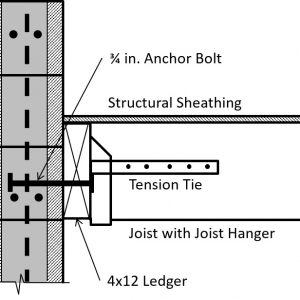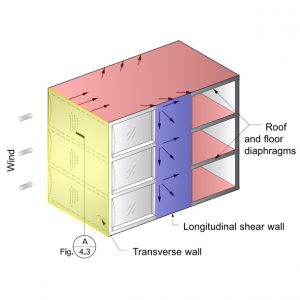© 2022 The Masonry Society. All Rights Reserved.
Custom website design by RunLocal Marketing, Longmont, CO
Design of Masonry Shear Walls

The design of reinforced masonry shear walls using both the Allowable Stress Design method and the Strength Design method is covered in this lesson.
$75.00
SKU
LMS1805
Categories Allowable Stress Design, Design, Free for Members, Strength Design
Description
The design of reinforced masonry shear walls using both the Allowable Stress Design method and the Strength Design method is covered in this lesson. The requirements for both the design for overturning and the design for shear are explained. The prescriptive seismic detailing requirements for each of three reinforced masonry shear walls types, ordinary, intermediate, and special, are explained, with particular attention to special reinforced shear walls. The design process is illustrated with examples.
Learning Objectives:
- Understand the three different types of reinforced masonry shear walls and the requirements for each type.
- Understand seismic design requirements for shear walls.
- Understand the design process for shear walls using the Allowable Stress Design method.
- Understand the design process for shear walls using the Strength Design method.
Related products
-
Anchoring
Strength Design of Masonry #6 – Strength Design Requirements for Reinforcement & Connectors
$75.00 Add to cartStrength Design of Masonry #6 – Strength Design Requirements for Reinforcement & Connectors
Reinforcement and connectors are essential to ensure a proper load path in masonry buildings. This session will review basic detailing requirements for reinforcement and connectors, and specific requirements for strength design of masonry. Lap length requirements for reinforcement, and design of anchor bolts will be reviewed.
Get all 6 Strength Design of Masonry lessons at a discounted rate when buying the Strength Design of Masonry bundle. Save $30 compared to buying them separately.
SKU: LMS2106 Categories: Anchoring, Design, Member Discount-75, Reinforcement, Strength Design, Strength Design Series$75.00 -
Design
Strength Design of Masonry #1 – Introduction to Strength Design of Masonry and Design Methodologies
$75.00 Add to cartStrength Design of Masonry #1 – Introduction to Strength Design of Masonry and Design Methodologies
This introductory session will review basic strength design concepts for masonry, noting key differences with procedures for concrete.
Get all 6 Strength Design of Masonry lessons at a discounted rate when buying the Strength Design of Masonry bundle. Save $30 compared to buying them separately.
SKU: LMS2101 Categories: Design, Member Discount-75, Strength Design, Strength Design Series$75.00 -
Lintels in Masonry Walls
This lesson reviews the behavior and load distribution of a lintel within a wall, to help design this common element more effectively and efficiently.
SKU: LMS1902 Categories: Design, Member Discount-75$75.00 -
Exterior Masonry Walls and Energy Code Compliance
This lesson provides an overview of energy code provisions, reviews energy studies performed utilizing whole building analysis, and provides recommendations for cost effective energy efficient solutions for energy efficient exterior masonry wall designs.
SKU: LMS1703 Categories: Codes & Standards, Free for Members$75.00



